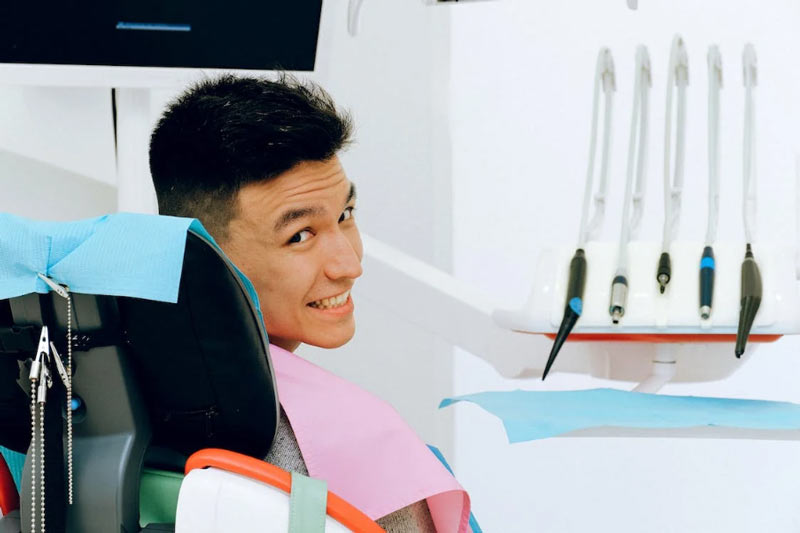As the science of dentistry evolves, our understanding of orthodontic issues like overbites becomes clearer. Overbites, once seen merely as aesthetic concerns, are now known to have more profound implications on one's overall dental health.
Overbite Correction
Simply put, an overbite denotes the extent of vertical overlap of the upper front teeth over the lower front teeth. While a slight overlap is typical, complications arise when this surpasses the standard range of two to four millimeters. This deviation from the norm necessitates exercises to correct overbite or even surgical interventions in extreme cases.
Overbites are more than just a dental irregularity; they signify a prevalent orthodontic concern affecting numerous individuals worldwide. The potential ramifications of an untreated overbite span from aesthetic issues to more pronounced functional complications in daily life.
For instance, severe overbites can lead to challenges in pronunciation, increased wear of the lower teeth, and even digestive problems due to improper chewing. Therefore, overbite correction is about perfecting one's smile and ensuring overall oral functionality.
Aesthetic and Functional Impacts
An overbite can impact an individual's self-esteem, causing them to be self-conscious about their appearance. Furthermore, in pronounced cases, an overbite can interfere with one's ability to eat certain foods or even articulate specific words clearly. The functional detriments further underscore the necessity of timely overbite correction.
What Causes an Overbite?

Several factors can lead to the development of an overbite. Genetic predisposition is often a primary contributor, dictating the structure and alignment of our teeth. However, external factors during early childhood, like prolonged thumb-sucking, pacifier use, or even the habitual thrusting of the tongue against the upper teeth, can exacerbate or cause an overbite. These instances highlight the importance of early overbite correction with braces or other methods.
Consequences of Neglect
Letting an overbite remain untreated can manifest in numerous ways. Besides the obvious aesthetic concerns, overbites can pose challenges in maintaining oral hygiene. The misalignment can create hard-to-reach areas that become breeding grounds for bacteria, leading to potential gum diseases. In severe cases, the upper teeth might cause wear on the lower gums, stressing the need for exercises to correct overbite and halt further deterioration.
The Spectrum of Bite Disorders
More Than Just Overbites
While overbites are common, they represent just one type of malocclusion. The orthodontic landscape identifies several bite disorders, each with its characteristics and challenges. For instance, overjet focuses on the horizontal protrusion of the upper teeth, distinct from the vertical concerns of an overbite.
Cataloging Common Malocclusions
Dental malocclusions come in various forms, from the reverse scenario of underbites to the misaligned world of crossbites. An open bite, for instance, represents a situation where the back teeth might touch, but the front teeth don't meet as they should. Such issues may necessitate overbite correction with braces or tailored exercises to correct overbite.
Bite Misalignment: Broader Implications
Each bite disorder, while unique, shares a common thread — the potential to disrupt daily life. The consequences are manifold, whether the challenge of maintaining oral hygiene, the wear and tear of opposing teeth, or even digestive issues stemming from improper chewing. The increasing demand for overbite correction reflects the collective understanding of these broader implications.
Modern Approaches to Overbite Correction

The Dawn of Clear Aligners
Clear aligners have revolutionized orthodontics. These transparent, almost invisible trays from durable plastic materials provide an attractive alternative to traditional metal brackets and wires. Clear aligners present a promising avenue for discreet yet effective overbite correction. They are instrumental in cases where the overbite is not severe. Over time, they gently move the teeth into the desired position, providing a more comfortable and less noticeable treatment option. Indeed, clear aligners are proving to be a breakthrough in exercises to correct overbite without invasive procedures.
Back to Basics: Traditional Braces
The tried and tested method, overbite correction with braces, remains a staple in orthodontic treatment. While they might seem old-fashioned compared to their clear counterparts, metal braces have advantages. They are often preferred when overbite is pronounced, requiring more substantial corrective forces. Traditional braces are robust and can tackle many orthodontic issues, not limited to overbite correction. Moreover, innovations like tooth-colored brackets have become less conspicuous, making them more palatable for patients concerned about aesthetics.
The Last Resort: Surgical Interventions
In cases where the overbite is caused by skeletal discrepancies, surgical overbite correction might be the only option. Surgery is usually reserved for severe cases where non-invasive treatments like exercises to correct overbite or braces won't suffice. The jaw is realigned during this procedure, ensuring the teeth meet correctly. While it sounds intimidating, it's a well-practiced procedure with high success rates. Overbite correction with braces might still be necessary post-surgery to perfect the teeth's alignment.
Evaluating the Costs: Investment in Your Smile
Financial Implications of Clear Aligners
Given their aesthetic appeal and effectiveness, clear aligners come with a price tag. Generally, they range from $1,500 to $8,000, with the costs fluctuating based on brand, treatment duration, and the complexity of the overbite correction needed. While they might seem pricey, they offer a discreet method for those uncomfortable with traditional braces.
Traditional Braces: Breaking Down the Cost
Overbite correction with braces has been around for ages, and its cost varies. Factors influencing price include the severity of the overbite, the type of braces chosen (metal, ceramic, lingual), and the treatment's duration. On average, patients can expect to pay anywhere between a few thousand dollars to over $10,000.
Budgeting for Surgery
Surgical overbite correction is typically the priciest option. The cost isn't just associated with the surgery and pre-operative consultations, post-operative care, and potential orthodontic treatments post-surgery. Discussing with your orthodontist and surgeon is crucial to getting a comprehensive cost breakdown.
Answering Common Concerns
Diagnosing an Overbite: What to Look For
Identifying an overbite isn't about its presence but its severity. Symptoms like difficulty closing the mouth, chewing challenges, or speech impediments can indicate a pronounced overbite. Consulting an orthodontist is the best way to diagnose an overbite and understand the need for overbite correction.
Clarity on Clear Aligners
Clear aligners like Invisalign can effectively manage mild to moderate overbites. Before opting for mail-order variants, always consult an orthodontist. They can provide tailored advice, recommending overbite correction with braces or clear aligners based on the individual's needs.




